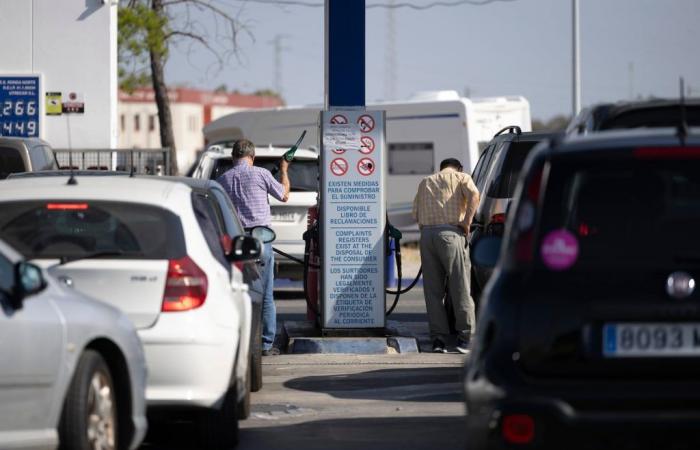Inflation has returned to its irregular downward course. In June, the Consumer Price Index (CPI) slowed by two tenths to 3.4%, thus breaking the upward streak that had begun in March. The underlying inflation, which excludes fresh food and energy products as they are the most volatile, stood at 3% for the second consecutive month, after surprising analysts in May by rising for the first time in a year. Fuels and the good evolution of the cost of food have played in favour of this moderation, while electricity has been the great element against it, according to the National Institute of Statistics (INE) announced this Friday. The price of the megawatt hour has been around 54 euros this month, well above what was recorded in the same month of the previous year and also in the first months of 2024.
Although we will have to wait for confirmation of the data by the INE to know exactly how much electricity has become more expensive, the Complutense Institute for Economic Analysis (ICAE) estimates that it has risen this month by almost 17% compared to June 2023 and 6% compared to May. Its upward trend implies that by July VAT will return to 10%, as established by the Government in the package of measures to mitigate inflation – according to the decree, if the price averages 45 euros per megawatt (MWh) one month, the bill for the next month will be taxed at the reduced rate of 10%. If, however, it remains below that threshold, the VAT on the next bill jumps to 21% pre-crisis.
On the fuel side, analysts explain that both gasoline and diesel have been moderating little by little since May, although their month-on-month decrease has not been enough to be below the 2023 values. In fact, in a comparison Year-on-year, both have become more expensive between 2.6% and 2.7%, according to the ICAE. These three energy products (diesel, gasoline and electricity) have a high weight in the general CPI – 8% – so their variation determines, together with food, how much the global index falls.
From the Ministry of Economy they point out that the reduction of the CPI in June “continues to reflect the capacity of the Spanish economy to make compatible the greater economic growth among the main countries of the euro zone with a moderation of prices and the maintenance of the measures to continue reducing food prices.”
Summer spikes
In the absence of disaggregated data from the statistics centre, economists are anticipating a new rise in the cost of services, particularly tourism and hospitality. In May, domestic tourist packages registered a rise of 17.7% year-on-year, while hotels, hostels and similar accommodation services rose by almost 10%. In addition, passenger transport by sea – that is, cruises – rose by 22%. With summer approaching and the arrival of millions of visitors, it is logical that these values will continue their upward trend. But even if they slow down in the coming months, the fall will be so slight that there will be no improvement in underlying inflation, explains María Jesús Fernández, an analyst at Funcas. Her forecast is that the rate will rise again in July and remain around 3% due to the step effect. Another determining factor will be electricity. With the arrival of high temperatures in summer and then the cold of winter, the futures market is pointing to 70 euros per megawatt hour by the end of the year.
Although food prices have been favourable this time, it is likely that their value will continue to move up and down, and vice versa, in the coming months. Their persistent fluctuation has been decisive in the Ministry of Finance’s decision to extend, once again, the reduction in VAT. However, the bet is that by the end of the year the shopping basket will be completely stable, hence the discounts will gradually decrease until they return to the usual tax rates – thus, basic foods will go from a rate of 0% to 4% while pasta and oils will leave the current rate of 5% to gradually reach 10%. The only exception will be olive oil, which the Government has decided to include in the group of super-reduced prices, so in the future, when all these discounts are eliminated, it will remain at 4%.
According to the provisions of the ministry led by María Jesús Montero, from July 1 to September 30, basic foodstuffs will maintain the current rate of 0%, while pasta and seed oils will have it at 5%. . Between October 1 and December 31, the rate will rise to 2% in the first group, while it will rise to 7.5% in the second. Starting in 2025, both categories will return to the full tax.
Follow all the information of Economy and Business in Facebook and xor in our weekly newsletter






